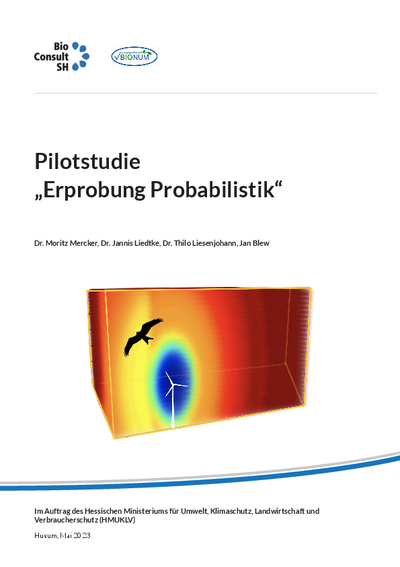Probabilistics – a pilot study
A probabilistic approach is seen as a way to re-evaluate the risk of collision or mortality and thus conflicts with species protection in a further development of wind energy use.
How high is the risk that birds collide with wind turbines?
The term “probabilistics” (also called “probability theory”) refers to the process of estimating or predicting probabilities. In order to be able to make these predictions, mathematical models of the underlying process are usually combined with an analysis of collected data.
The mathematical model has to be as close to reality as possible and the empirical data used has to be as reliable as possible. However, the latter are usually associated with random processes that also need to be considered in the right context.
A collision risk model (CRM) is such a probabilistic model that serves to estimate the risk (i.e. the probability) of a collision under specific conditions (e.g. depending on location, bird species and/or wind turbine) as accurately as possible.
Aim of the project
Aim of this pilot study was to develop and test probabilistic methods to determine the project-related mortality risk of breeding bird species vulnerable to collisions with wind turbines.
It was to be clarified whether the conditions for a significance test based on a probabilistic approach are met. For this purpose, existing model approaches were first evaluated and further developed into a hybrid model considering the intended application.
Method
In a first step, several central parameters that have an influence on the collision probability were identified. Subsequently, the extent to which the required empirical data (bird movement data, weather data, operating data of the wind turbines, habitat conditions) form a sufficiently reliable basis was examined.
Results
Due to time constraints, data analysis and modelling initially focused on only one bird species – the red kite. All findings of this pilot study about the applicability therefore mainly relate to this species and reflect other bird species only to a limited extent.
A further development of the method and thus the application to further bird species at risk of collision as well as the improved evaluation of some statistically relevant parameters (e.g. evasive movements in the rotor swept area) is planned for.
Papers and reports
Further information
BioConsult SH and Bionum carried out the pilot study on probabilistics on behalf of the Hessian Ministry for the Environment, Climate Protection, Agriculture and Consumer Protection.
The pilot study was initiated by sub-working group 2 “Probabilistics” of the Conference of Environment Ministers (UMK) within the framework of the acceleration of the energy transition and the associated approval procedures.
Please refer to the Competence Centre for Nature Conservation and Energy Transition (KNE) for additional information (in German).
On behalf of
Funding period
2022 to 2023
Project partners





 bioconsult-sh.de
bioconsult-sh.de